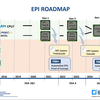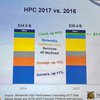Chinese chipmaker Hygon is now manufacturing Zen-based x86 CPUs using a licensing agreement it signed with AMD in 2016.
The European Processor Initiative (EPI), an ambitious program to develop a pair of chips for domestic supercomputers, is poised to change the way Europe does HPC. And although the work is still very much in its early stages, it looks like the Europeans have selected their preferred processor architectures: Arm and RISC-V.
The first module of JUWELS, a supercomputer that is expected to be a model for future exascale systems, is now up and running at the Jlich Supercomputing Centre (JSC).
ANSYS, Cray, and a university researcher have conducted the first aerodynamic simulations of a full peloton of road cyclists, yielding some unexpected results.
Researchers at the Great Western 4 (GW4) Alliance have benchmarked the Cavium ThunderX2 processor that will soon power the Isambard supercomputer. But the most significant advantage of the Arm processor may have nothing to do with performance numbers.
According to the two leading analyst firms covering the high performance computing market, the use of the cloud for HPC workloads is looking a lot more attractive to users these days.
Episode 232: Addison Snell and Michael Feldman wrap up their coverage of ISC18 with an analysis of the biggest news items of the show.
Episode 231: Addison Snell talks with IBM's David Turek about Summit, the #1 system heading up the new TOP500 list.
Episode 230: Addison Snell and Michael Feldman talk TOP500, HPCG, and Green500 live from the ISC18 show floor.
DataDirect Network (DDN) announced this week that it has bought Intels Lustre file system business and related assets.







